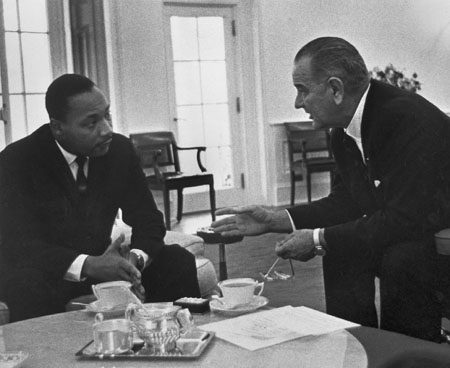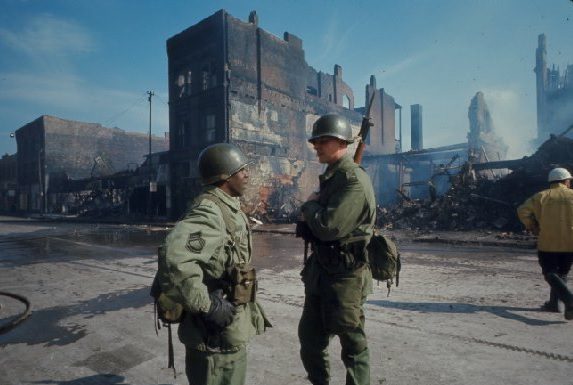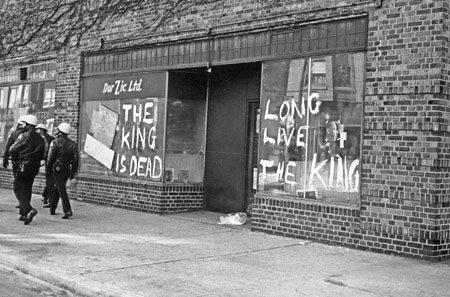On the fiftieth anniversary of Martin Luther King Jr.’s death, CHM director of curatorial affairs Joy L. Bivins reflects on his assassination.
On this date fifty years ago, the Reverend Dr. Martin Luther King Jr. was fatally shot on the balcony of the Lorraine Motel in Memphis, Tennessee. Today, around our city and throughout the nation, ceremonies of solemn remembrance will take place as we pause to reflect on the life and legacy of Dr. King, as well as what we all lost that day in 1968.
Only thirty-nine years old when he was murdered, King’s youth is often obscured by the international reputation he earned during his relatively short career. In 1955, at twenty-six and as a new father, he was asked to be a leader of the Montgomery bus boycott—a catalyzing event in the modern civil rights movement. In the next dozen years, he became the movement’s most visible leader, advocating tirelessly for the end of the nation’s violently oppressive racial caste system. His activism, rooted in an ethic of love and nonviolent action, stands in painful contrast with his violent murder.

King meets with President Lyndon B. Johnson at the White House, Washington, DC, 1963. Photograph by Yoichi Okamoto, ICHi-034763
King remained a committed civil rights activist but expanded his vision in the late 1960s. In 1967, he spoke out against the Vietnam War and launched the Poor People’s Campaign, a new movement aimed at economic and political redistribution for all Americans. In March and April 1968, King traveled to Memphis to support striking black sanitation workers. The night before his assassination, he powerfully addressed an overflow crowd at the Mason Temple assuring them that “We as a people will get to the promised land.” Less than twenty-four hours later, he was pronounced dead.
Disbelief, anger, and grief at King’s assassination yielded devastating reverberations in the United States as nearly one hundred cities experienced some sort of civil unrest. In Chicago, a city King frequently visited and even called home in 1966 as he attempted to shine light on northern racism, the reaction was swift and fierce. African American communities, particularly on the city’s West Side, were overwhelmed by burning and looting that lasted from Friday through Sunday. To reclaim order, thousands of members of the Illinois National Guard were called in, along with the full force of the Chicago police. By Monday morning, at least nine Chicagoans were dead, hundreds had been arrested, and more than one hundred buildings were decimated.

National Guardsman in front of buildings burned in the wake of King’s assassination, Chicago, 1968. Photograph by Declan Haun, ICHi-068946
City officials quickly memorialized King by renaming South Parkway, the boulevard running through the heart of Black Chicago from Twenty-Fifth Street to 115th Street, after the slain leader. And over the next several years, activists pushed for a national holiday in his honor. In 1983, Dr. King’s birthday was recognized as a federal holiday—one that many of us celebrate as a day of service and reflection. It is, however, as important, maybe more important, to commemorate the death of this prophetic voice for justice and equality. His words and actions continue to illuminate just how high the cost of working for freedom can be. Today, let’s not only contemplate what he accomplished during his short life, but the brilliance, the possibility that was taken from us all on that day in April.

Patrolling officers walk past a storefront memorial to Dr. King, Chicago, April 5, 1968. Photograph by Tom Kneebone, ICHi-003624
Join us in reflecting on Dr. King’s life in the exhibition Remembering Dr. King: 1929–1968, which covers on his civil rights work and focuses on his time in Chicago.